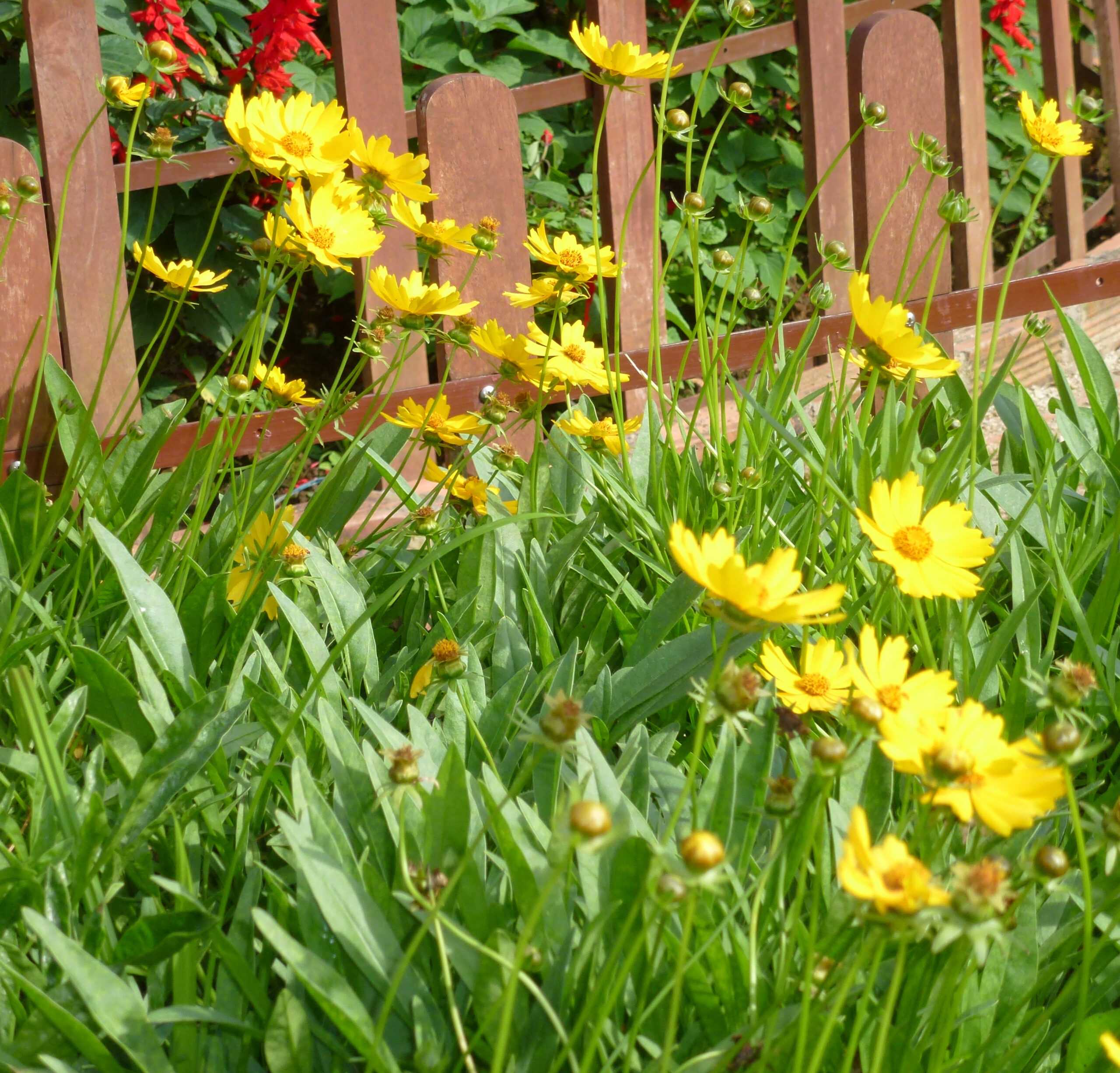This plant is not currently for sale. This is an archive page preserved for informational use.
Lance-leaf Coreopsis or Lance-leaf Tickseed, is a perennial wildflower 2-3 feet tall with striking golden 2-3-inch flowers characteristic of the genus, that is, with about 8 notched sterile ray flowers surrounding a center of many fertile, yellow disk flowers. The flowers are held on vertical stalks above a mat of evergreen foliage. The fertile disk flowers develop into small, flat-ish brown, winged seeds (“tick” like).The plant is naturally found in rocky prairies, glades, bluffs, sandy open ground, roadsides, railroads. It is a popular garden plant because: the flowers are strikingly beautiful; it is very dependable and prolifically flowering; because it has few problems with insects or disease; because it will thrive in conditions of high heat, drought and humidity; and because it draws butterflies, bees and birds to the garden. It prefers full sun and moist, well drained soil, and may sprawl a bit if planted in overly rich or moist garden soil. This is a short-lived perennial which readily self-seeds, traits which make it a great candidate for a meadow or wild garden. The tendency to seed so readily has unfortunately earned this species and high place on the Japanese invasive plant list.

